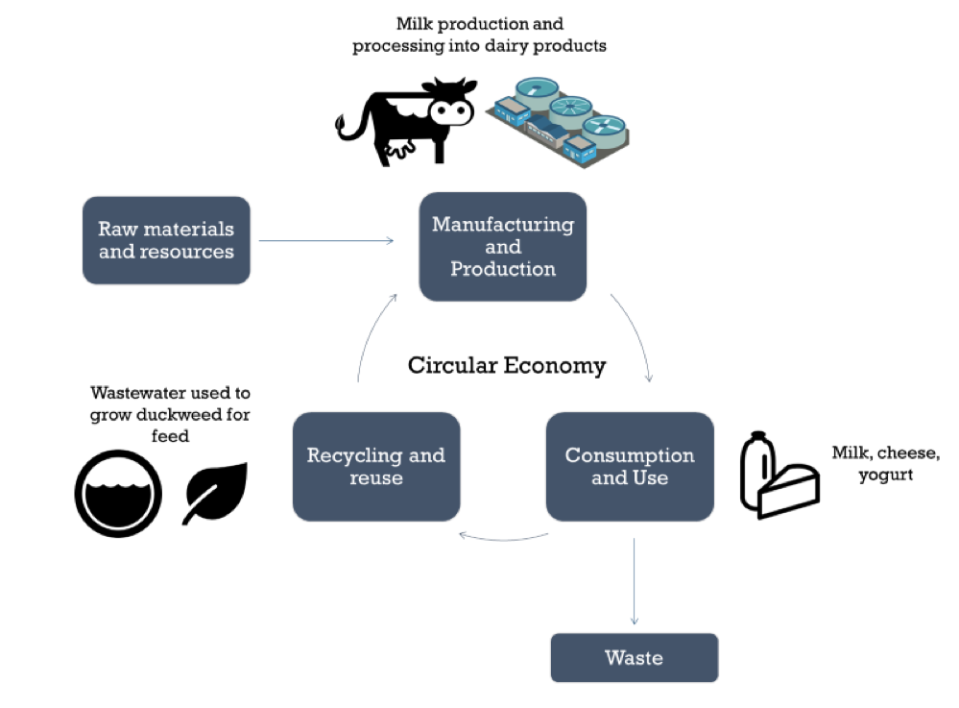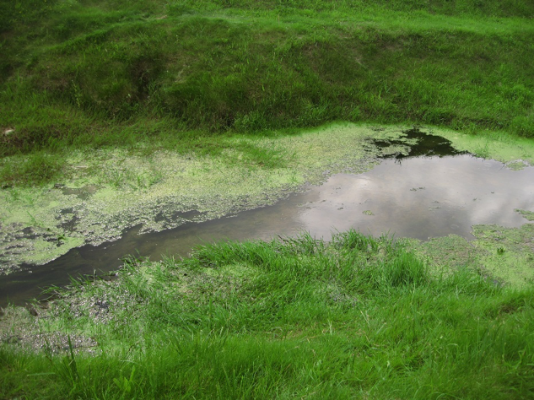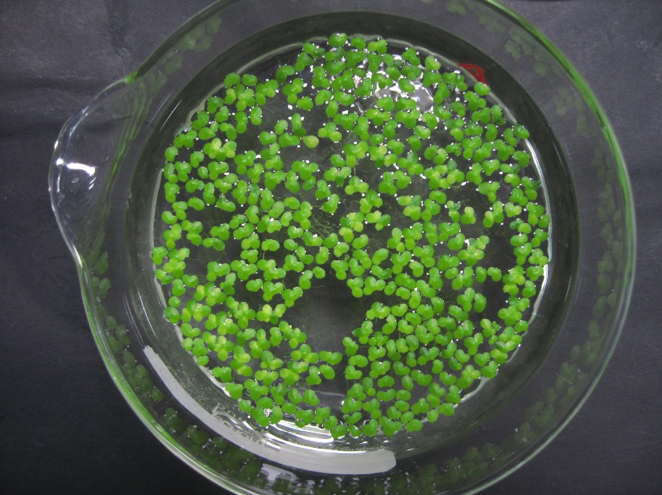Circular Economy and Dairy Industry

The circular economy is a concept that promotes of use of materials derived from existing industrial processes, often termed "waste", to minimise the use of raw materials in production.
This creates a closed-loop pattern in the economy, which effectively reduces the release of waste material into the environment; in short, to reduce, reuse and recycle waste. A key component is thinking about "waste" in a different way, not as something to be discarded but as something to be re-purposed. The concept of a circular economy has gained a more widespread recognition in recent years, moving from a theoretical approach to the economy to an applied practice which has business, political and public interest. The EU is currently promoting the circular economy through its EU Action Plan for the Circular Economy (2015) and the 2018 Circular Economy Package (http://ec.europa.eu/environment/circular-economy/index_en.htm). This encouragement has contributed to a gradual movement in a number of industries towards integrating circular economy models into their processes. The NEWTRIENTS project is developing a circular economy model to the waste from the dairy processing industry.

Worldwide it is estimated there is 830 tonnes of milk produced per year (FAO estimate for 2017), a figure which has been increasing year-on-year over the last decade. So, there is a pressing need to deal with the large volume of waste produced from processing this volume of raw milk. On a national level, 27% of the agricultural output in Ireland is dairy products, such as cheese, butter, processed milk and dried milk powder, all derived from raw cows’ milk. Over 5 million tonnes of milk are produced each year, a figure that has also been increasing since EU milk quotas were removed in 2015. There is a large amount of wastewater derived from this process. Wastewater which contains high concentrations of nitrate, ammonia and phosphate. These compounds can be environmentally damaging if they are released on rivers or seas, contributing to eutrophication which damages plant and animal life.

Agricultural animals such as cows, sheep and chickens are kept widely throughout the world either for their meat or their produce. Keeping animals for this purpose is a resource-intensive process. One aspect of this being the feed that is given to the animals. This feed must be adequately nutritious to keep an animal healthy. However, high-quality feed can be expensive to produce and expensive to buy. Cattle are mostly grass fed in Ireland, however, in the winter imported feed can be required to supplement silage. Highly nutritious feed such as soy is expensive to purchase, reducing significantly the net income a farmer can make. Growing soybean for animal feed also reduces the space available for production of other food that can be used directly by people. Furthermore, in Ireland in particular, this soy feed is mostly imported, so it is environmentally intensive and possibly unsustainable in the longer term.
Thus, there has been a strong interest in finding alternative feed sources for animals, particularly where there is a high reliance on imported feed. There has been much interest in using duckweed as a feed source for agricultural animals. Duckweed is a good feed in two important aspects; protein quantity and protein quality. The quantity of can vary but duckweed can contain up to 40% of its dry weight as protein. Protein quality refers to the amino acid make-up of the protein. There are certain amino acids such as methionine and leucine which cannot be made de novoby animals and must be acquired through food, and both can be found in duckweed. In both protein quantity and quality duckweed is comparable to soy and soy is already one of the most nutritious plant sources used as a feed. Another convincing reason for its use as a feed is that it could be produced locally and sustainably by using dairy industry wastewater as its growing medium. Ireland's large dairy industry produces a sizeable amount of dairy processing waste in factories around the country. This locally produced waste could become the source of locally produced feed. Waste-grown duckweed also has the benefit of not coming from an environmentally intensive source. Agricultural crops such as soy receive lots of inputs such as water, fertilizer and pesticide which increase the monetary and environmental costs of producing them. Growing duckweed on waste will have much a lower footprint in comparison. The addition of a circular economy approach to wastewater treatment will significantly reduce the industry overall environmental impact, ensuring a more sustainable and liveable system that is profitable for the industry yet beneficial to the environment and the people.

Image of duckweed species Lemna minor
The NEWTRIENTS project aims to show that a high-protein feed supplement that has a much-reduced environmental impact can be made from dairy wastewater effluent.
Post by Éamonn Walsh
NEWTRIENTS
Novel Eco-Sensitive Wastewater Treatment Recovering Dairy Industry Effluent Nutrients
Contact us
